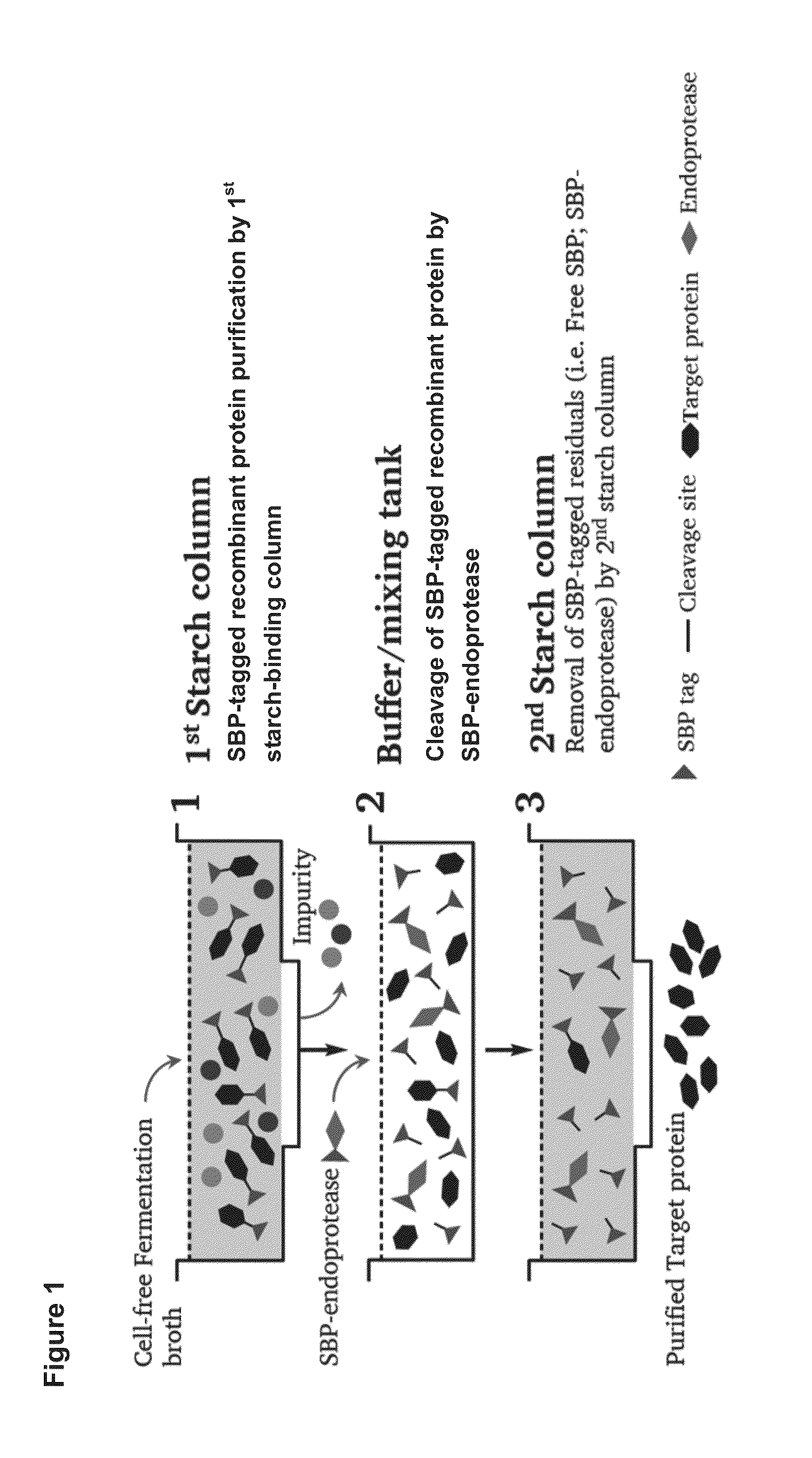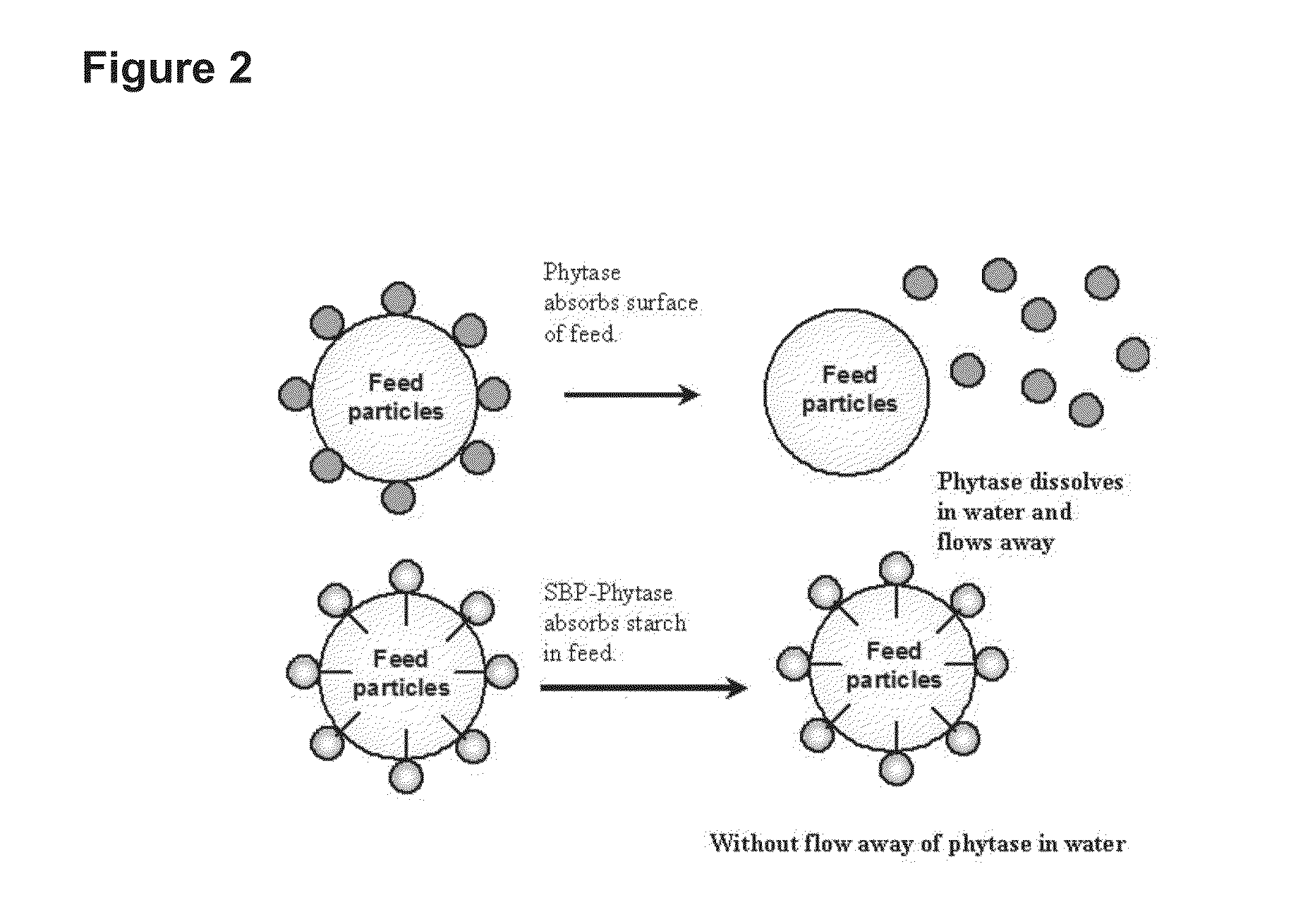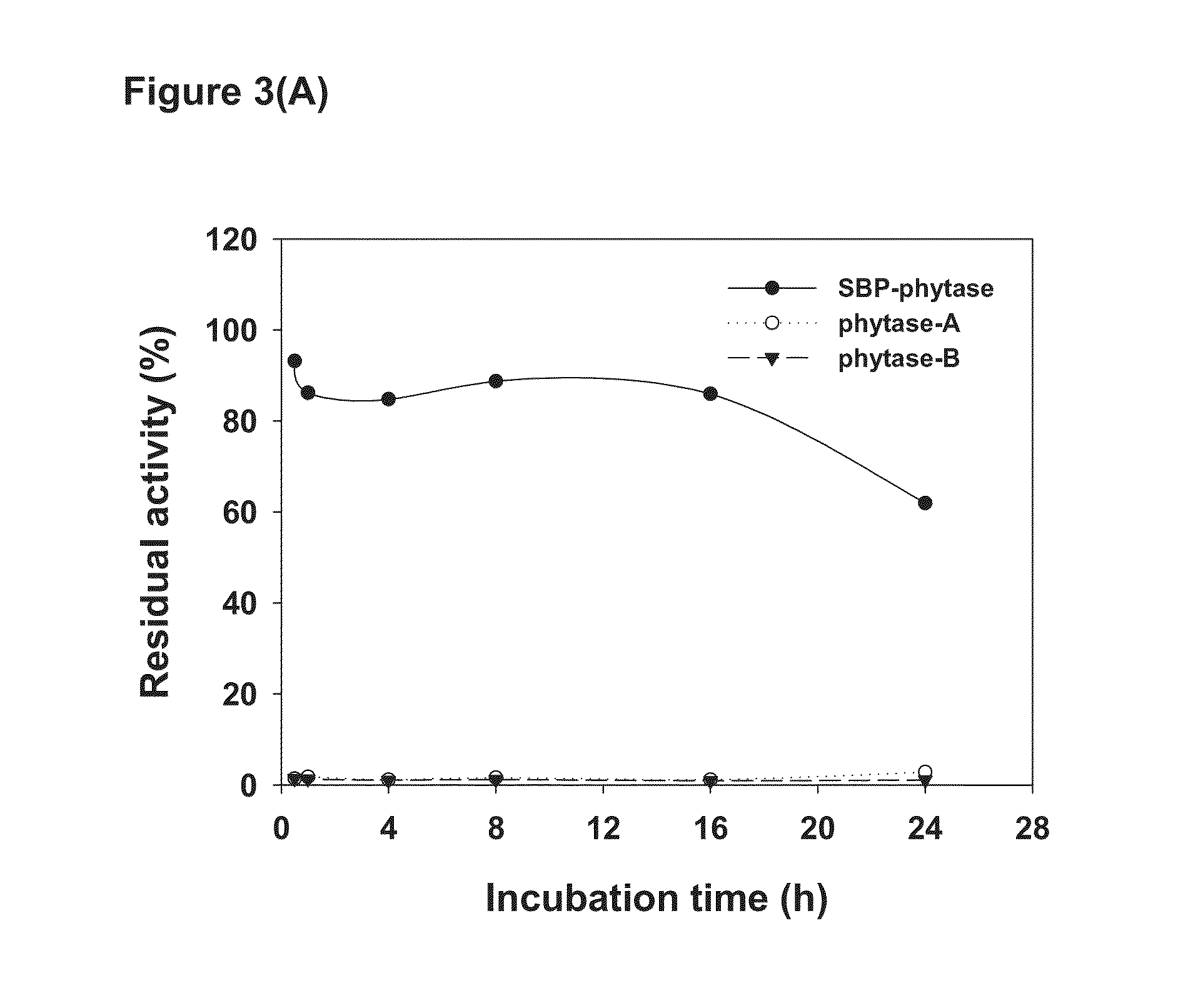Method for increasing thermal stability and retaining activity of a protein
a protein and thermal stability technology, applied in the field of methods and systems for increasing stability and retaining activity of proteins, can solve the problems of enzyme activity destruction, inconvenient purification process, high cost of purification columns, etc., and achieve the effect of increasing the thermal stability of a sbp-tagged recombinant protein
- Summary
- Abstract
- Description
- Claims
- Application Information
AI Technical Summary
Benefits of technology
Problems solved by technology
Method used
Image
Examples
example 1
Protein Purification
Construction and Expression of SBP-Tagged Protein
[0073]The SBP (starch binding protein) gene (SEQ ID NO: 1) was PCR amplified and fused to the N-terminal of target protein with an endoprotease cleavage site between the SBP and target protein gene. The fusion protein gene was then cloned into Pichia pastoris expression vector pPICZαA under control of AOX1 promoter and transformed into Pichia pastoris GS115 for expression. The Pichia pastoris transformant harboring SBP-target protein gene was cultivated in BMGY media for 24 hours. The cells were recovered by centrifugation and resuspended in BMMY containing 0.5% methanol. Methanol (0.5% v / v) was added every 24 hour in order to induce the expression of SBP-tagged recombinant protein. After induction for 5 days, the cells were removed by centrifugation and the cell-free fermentation broth was collected for downstream purification.
[0074]The agarase gene (SEQ ID NO: 14) was PCR amplified from the chromosomal DNA of Pse...
example 2
Comparison of Thermostability
[0078]The SBP gene (SEQ ID NO: 1) was PCR amplified and fused to the N-termini of target enzyme. The Lipase gene (SEQ ID NO: 3) from R. oryzae, Xylanase gene (SEQ ID NO: 5) from the unpurified ruminal fungal culture and the Phytase gene (SEQ ID NO: 7) from E. coli were cloned and fused to the SBP. The SBP-Lipase, SBP-Xylanase and SBP-Phytase fusion proteins were expressed by the method described above and used in the present invention.
Thermal Stability of Lipase from Different Sources
[0079]One unit of Lipase activity (U) was defined when the sample released 1 μmole p-Nitrophenol per minute in 0.3 mM 4-Nitrophenyl palmitate under 30° C., pH 7.0. SBP-Lipase (52500 U / g) and F-AP15 Lipase (32430 U / g, R. oryzae Lipase purchased from Amano Enzyme Inc.) were mixed with fermented soybean meal of water content of 15% or 20% to reach 1000 per gram. The mixed 100 U / g Lipase from different sources was weighted to pick 12 g into 100 ml serum vial. The serum vial with...
example 3
Binding Assay of SBD-eGFP to Different Types of SBP Matrixes
Binding Assay of SBD-eGFP to Different Types of Resin
[0088]Two milligrams of prewashed amylopectin, amylose resin (Bio-Rad Laboratories Inc., Hercules, Calif., U.S.), dextrin resin (GE Healthcare, Waukesha, US) and sephadex (Sigma, Saint Louis, Mo., U.S.) were stirred with SBD-eGFP in binding buffer (50 mM NaOAc, pH 5.5) at a concentration of 0.3 mg / mL in a total volume of 200 μL. After incubation with stirring at 25° C. for 3 hr, the samples were centrifuged. The supernatant (unbound protein) and the resin pellets (bound protein) were then boiled and applied for SDS-PAGE. Results of the binding assay were showed in FIG. 4(A) to (C).
Binding Assay of SBD-eGFP to Alginate Beads
[0089]Two hundred and fifty micro-liters of prewashed alginate beads were stirred with SBD-eGFP in binding buffer (50 mM NaOAc, pH 5.5) at a concentration of 0.6 mg / mL in a total volume of 1 mL. After incubation with stirring at 25° C. for 3 hr, the sam...
PUM
| Property | Measurement | Unit |
|---|---|---|
| Thermal stability | aaaaa | aaaaa |
Abstract
Description
Claims
Application Information
 Login to View More
Login to View More - R&D
- Intellectual Property
- Life Sciences
- Materials
- Tech Scout
- Unparalleled Data Quality
- Higher Quality Content
- 60% Fewer Hallucinations
Browse by: Latest US Patents, China's latest patents, Technical Efficacy Thesaurus, Application Domain, Technology Topic, Popular Technical Reports.
© 2025 PatSnap. All rights reserved.Legal|Privacy policy|Modern Slavery Act Transparency Statement|Sitemap|About US| Contact US: help@patsnap.com



